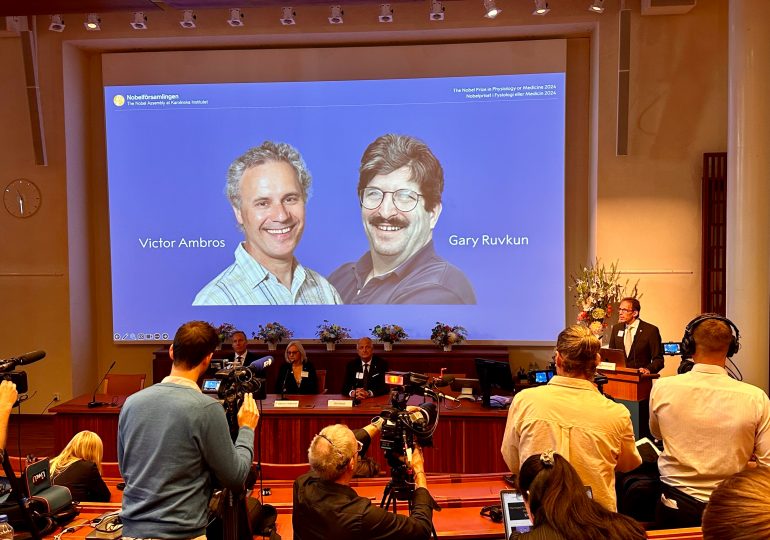Two scientists have been award the 2024 Nobel Prize in Physiology or Medicine for their discovery of microRNA. Victor Ambros, professor of molecular medicine at the University of Massachusetts Chan Medical School, and Gary Ruvkun, professor of genetics at Harvard Medical School and an investigator at Massachusetts General Hospital, received the prize for revealing how microRNAs turn genes on and off.
[time-brightcove not-tgx=”true”]
This isn’t the first time RNA has been honored recently. The molecule has been something of a scientific darling of late: last year, Katalin Kariko and Drew Weissman were awarded the Nobel Prize in Physiology or Medicine for their fundamental discovery that made mRNA-based vaccines possible, a development that transformed the COVID-19 pandemic.
Here’s what the discovery of microRNA means and how it may affect human health.
What is microRNA, anyway?
The discovery makes it possible to manipulate which genes are activated or suppressed in cells. Doing so is critical to controlling the production of proteins that in turn regulate nearly all of the body’s functions. It’s one more level of genetic control that is making the next generation of disease treatments possible.
Read More: FDA Approves the First New Schizophrenia Drug in Decades
Like many scientific breakthroughs, the discovery was serendipitous. “It was something so unexpected that we ignored it for a while as schmutz,” Ambros said during an Oct. 7 press conference. It started in 1993 when he and Ruvkun worked together as postdoctoral researchers in Massachusetts and published what they thought was an interesting finding in worms that failed to develop properly due to two mutations they identified. The duo each took one of the genes to investigate further, initially focusing on looking for aberrant proteins coded by the mutant genes. Normally, DNA codes that make up genes lead to RNA sequences that cells then turn into proteins. Each cell in the human body, for example, contains the exact same DNA sequences, or blueprint—but depending on which genes are turned on and which are suppressed, they take on different characteristics and functions.
Ambros and Ruvkun uncovered one of the ways that cells orchestrate this complex signaling: with what are called microRNAs.
To Ambrose’s surprise, the end product of the mutant gene he explored wasn’t a protein but a tiny snippet of RNA, or microRNA. Ruvkun’s work on the other mutant gene showed that microRNA attached to the RNA made by his mutant gene and acted as a monkey wrench in the protein-making process, essentially blocking its production and leading to the worm’s abnormal development.
The finding remained an anomaly in the world of worm researchers and was “met with almost deafening silence from the scientific community,” the Nobel Committee noted in its announcement. That is, until Ruvkun discovered another microRNA in 2000: this time one that also appeared in mice, other animals and, importantly, humans.
The future of microRNA
About 1,000 microRNAs have been identified in people, and while knowledge about the field is still in its infancy, these small pieces of RNA appear to be involved in a multitude of important processes, from development to basic cellular functions. Some have been implicated in diseases like cancer. Understanding how they work, and how to manipulate them to turn genes on or off, could potentially lead to many new therapies for myriad human diseases. Already, researchers are testing mircoRNA-based strategies in animals and early human studies to treat cancer and infectious diseases.
“We know from genetic research that cells and tissues do not develop normally without microRNAs. Abnormal regulation by microRNA can contribute to cancer, and mutations in genes coding for microRNAs have been found in humans, causing conditions such as congenital hearing loss, eye and skeletal disorders,” the Nobel committee said. “MicroRNAs are proving to be fundamentally important for how organisms develop and function.”
Leave a comment








